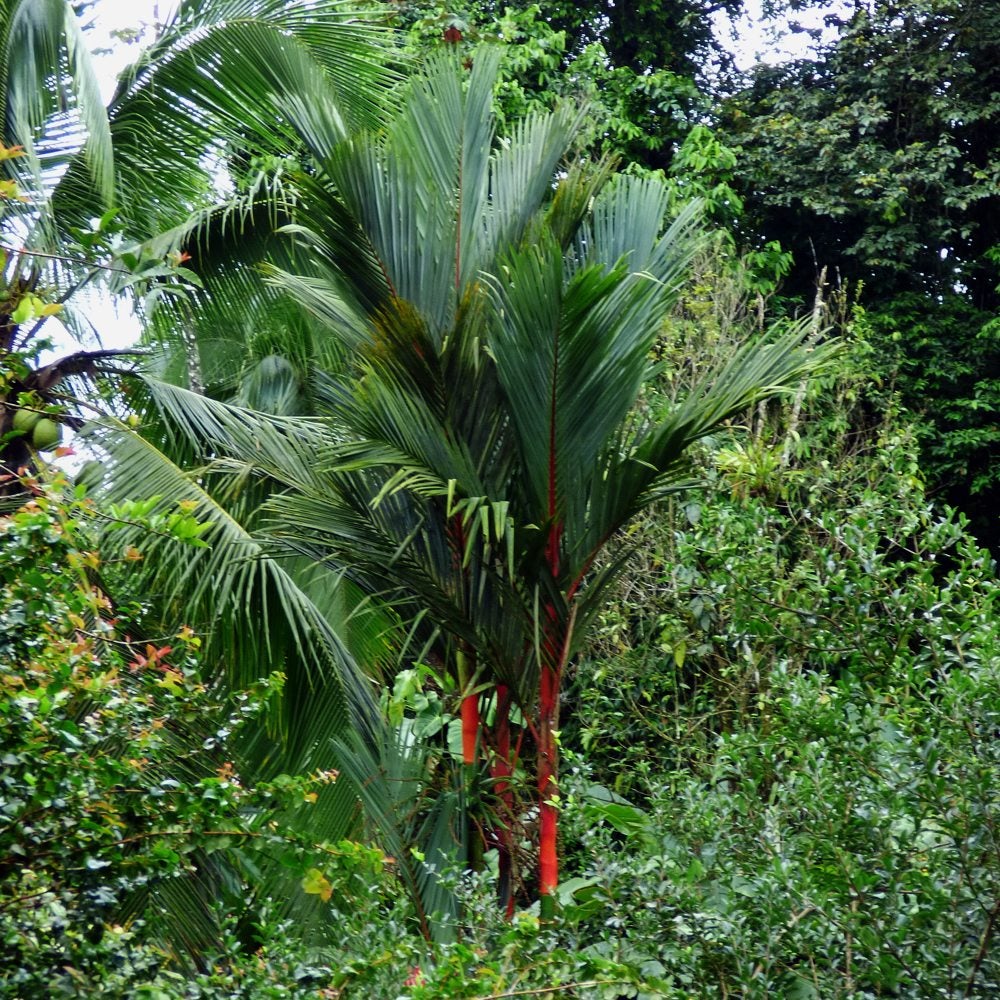Lipstick Palm Growing Conditions: Learn About Lipstick Palm Plant Care


Also known as red palm or red sealing wax palm, lipstick palm (Cyrtostachys renda) is appropriately named for its distinctive, bright red fronds and trunk. Lipstick palm is considered by many to be one of the world’s most beautiful and exotic palms. If you live in USDA plant hardiness zone 10b or above, where temperatures never drop below 40 degrees F. (4.5 C.), you can grow this stunning palm in your own garden. Read on for more lipstick palm information.
Lipstick Palm Information
Lipstick palm is a tropical plant native to Malaysia, Borneo, southern Thailand, and Sumatra, where it grows in swampy areas, along riverbanks, and in coastal tidal areas. It is threatened in some areas due to reduction of lowland forests. Red sealing wax palm reaches heights of up to 50 feet (15 m.) in its natural environment, but usually tops out at about 25 to 30 feet (8-9 m.) in the home garden.
How to Grow Lipstick Palms
Lipstick palm growing conditions includes partial shade while the plant is young. Otherwise, mature trees thrive in full sunlight. This warm climate tree prefers year-round temperatures between 75 and 85 degrees F. (24-29 C.). Red sealing wax palm doesn’t grow well in dry soil and isn’t tolerant of strong winds. It requires high humidity and even grows in swampy conditions or standing water, making this palm a useful pond plant. Although lipstick palm can be started by seed, it’s much easier and faster to remove and replant suckers from the side of an established tree. If you’re adventurous and want to try your hand at growing lipstick palm from seeds, first remove dry seedheads from a plant, then remove the seeds and plant them in a planting medium with excellent moisture retention. Germination generally takes at least two to four months, and seeds may not sprout for up to nine months.
Lipstick Palm Plant Care
As mentioned above, the main challenge when it comes to lipstick palm plant care is keeping the soil consistently moist. Otherwise, lipstick palm requires little attention. Although lipstick palm can be grown in a container indoors, most growers find it extremely difficult to maintain adequate humidity and warmth to sustain the plant.
Sign up for the Gardening Know How newsletter today and receive a free copy of our e-book "How to Grow Delicious Tomatoes".

A Credentialed Garden Writer, Mary H. Dyer was with Gardening Know How in the very beginning, publishing articles as early as 2007.